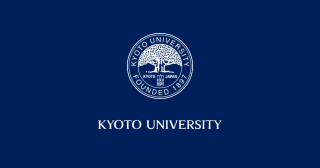The complexities of the modern world have drastically changed our understanding of "kokoro" -- the human mind and spirit. How did we arise, how have we changed, and how can we cope with the future?
The Kyoto Kokoro Initiative was founded at Kyoto University as an interdisciplinary research project, in order to explore kokoro from multiple perspectives. As part of its ongoing efforts, a first symposium was held 13 September 2015, attracting an audience of over 400 academics and members of the public.
Under the general theme of "Kokoro and History", five scholars from a range of fields spoke and engaged in lively discussion. Summaries of their presentations appear below. Followup symposia, including conferences with an international focus, are planned for 2016 and beyond.
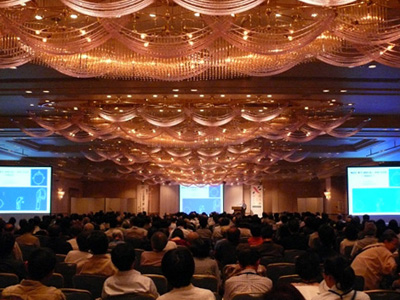
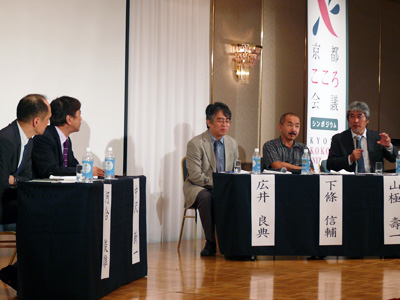
Shinichi Nakazawa "The Structure and History of Kokoro "
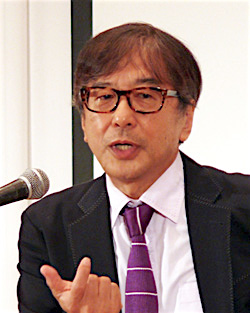
Shinichi Nakazawa
Director, Institut pour la Science Sauvage, Meiji University
Natural sciences, which seek to understand physical objects, and the humanities, which deal with the human psyche, have traditionally been independent of each other in terms of the methodologies they use. In reality, however, even abstract phenomena cannot exist independent of natural processes; this highlights the need to bridge the gap between the two approaches.
Modern neuroscience has yielded numerous insights into the human psyche, revealing, for example, how classifications and selections are done at the neural level, and how memories, emotions, and thoughts arise in the neural network. Both this "neural system" and the " kokoro system", the latter of which consists of the workings of the human intellect, can actually be understood from a unified perspective.
One component of this perspective is the concept of "bricolage", introduced by Claude Lévi-Strauss in his book, The Savage Mind , as the first principle of the kokoro system. The word "bricolage" refers to the process of creating new objects by combining existing materials. Examples of this process can actually be found at the level of genes; the human brain has evolved to where it is today by continuously arranging and rearranging its constituent materials.
Another unifying principle is homology, a system of classification under which objects with a common structure are not recognized as "zero". The kokoro as the totality of the conscious/unconscious is constantly generating new meaning by comparing different objects with each other, placing one on top of another and changing their relative positions, in a manner similar to what Sigmund Freud described as the primary process, which operates with metaphors and metonymies.
The kokoro and neural systems also appear to share the same foundation: an unknowable "zero space", or, in Buddhist terms, the void that underlies all of existence.
Regardless of whether what lies between the physical world and the kokoro is a constant zero, out of which nothing ever arises, or a void from which meaning continues to spring forth, the fact remains that the human brain is a pinnacle of the Earth's physical evolution, and that the kokoro is indeed a product of nature.
Toshio Kawai "The Historical Internalization of Kokoro and Interface"
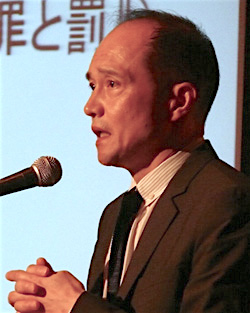
Toshio Kawai
Professor, Kokoro Research Center ,
Kyoto University
From a historical perspective, kokoro (human consciousness) is seen to have changed from an open system to a closed one, that is, from being connected to all -- including nature and other worlds -- to being contained in each individual.
In modern Europe, this "internalization" occurred under the influence of Christianity and Cartesian philosophy, and entailed the following developments: what had previously been perceived as demonic possessions and spiritual phenomena came to be recognized as symptoms of dissociative disorders belonging to individuals, and masks, which had revealed the faces of gods to the ancients, became tools for concealing what existed inside the wearers. Psychotherapy, which deals with individual psyches, can be understood to have resulted from these changes.
These developments, however, represent only one facet of kokoro 's historicity. In Japan, the concept has followed a distinct path of internalization, which involved, among other notable developments, the birth of Fukushiki Mugen-Noh ("dream noh", in two acts) during the medieval era. Whereas kagura , an ancient performing art rooted in Shinto, served as a vehicle for divine manifestation, Fukushiki Mugen-Noh centered on stories of Buddhist priests interacting with the deceased in a dream state. Japanese gardens and ikebana (flower arranging), which are created by taking parts of the natural environment and making exquisite miniatures of them, can also be regarded as examples of the specific type of internalization that has unfolded in this country. Japanese people's traditional affinity with this "mild" approach to internalization is evident also in the relative popularity of sandplay therapy here. In short, Japan appears to have experienced internalization in ways that are reflective of its own unique culture, and that do not share Western civilization's tendency to control and reject nature.
The concept of "internalized kokoro " itself, however, appears to have become inadequate for today's networked society, in which individuals are increasingly open to the outside. In this environment, it may be more beneficial to pay attention to what emerges from the unknown and to interface with the world, rather than to work on strengthening and deepening individuality. Haruki Murakami's short story, "Chance Traveler" (included in Blind Willow, Sleeping Woman ), which revolves around a chance encounter leading to major events, may provide an important clue in this regard. The key, perhaps, is to consciously select, and commit ourselves to, the connections that matter to us, even while accepting as a fundamental truth that we are all connected on a certain level.
Yoshinori Hiroi "' Kokoro ' and Social Design in Post-Growth Era"
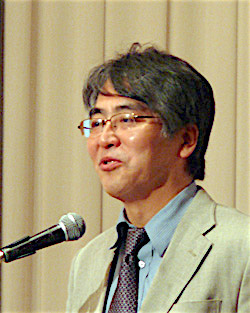
Yoshinori Hiroi
Professor, Faculty of Law and Economics, Chiba University
After several centuries of seemingly limitless expansion and growth, the world now appears to be transitioning to a post-growth era.
Three cycles become identifiable when thinking of human history in terms of expansion/growth and maturation/stability. During the hunter-gatherer and agricultural age, the period of transition from the expansion/growth to steady-state phases saw the emergence of entirely new concepts and ideas. Looking at the current period of transition from this perspective, amid growing concerns over environmental and resource issues and widening economic gaps, there has been a growing interest in topics such as scientific models that address levels above the individual, and humans' social, altruistic, and cooperative natures. In light of these trends, our ongoing transition appears likely to involve fundamental transformation of our " kokoro " and social system.
Meanwhile, in present-day Japan, rapid urbanization has catalyzed change in the traditional "rural community" mindset and behavior pattern, leading to a growing incidence of social isolation and an increase in single elderly households. Possible solutions to these issues include urban policies focused on the " kokoro " and community, such as creating "third places", which are places outside the home and the workplace where people feel a sense of belonging. Another major challenge facing this country -- and the industrialized world in general, for that matter -- is the issue of structural overproduction/oversupply as a cause of chronic unemployment, especially among the youth. Addressing this problem requires efforts to contain excess and to build a "sustainable welfare state" through proactive and preventive redistributions of social security and other benefits. As a "world leader" in population decline and aging, Japan must take a leading role in the creation of a global steady-state society by implementing these measures.
Finally, as a value principle for the third steady-state era, I am proposing a "global ethics" ("Earth ethics"), which is informed by an awareness of our planet's finite nature and regional diversity, and in which local (belonging) and universal (going beyond) orientations are cyclically integrated.
Shinsuke Shimojo "The Implicit Process and 'Personal History': Perception, Evolution, Social Brain"
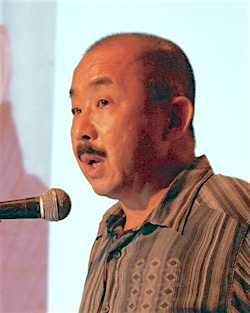
Shinsuke Shimojo
Professor, Division of Biology and Biological Engineering, California Institute of Technology
What your "kokoro" experiences or executes, such as memory, imaginative creation, emotion, decision, and action, reflects your "personal history". You can clearly notice the effect of "personal history" that takes place even in a very brief time period, Color aftereffect may be a good example. When you see snow after wearing blue sun glasses for several minutes, it will look like orange. This experience reflects not only the perceptual adaptation immediately prior to it, but also the long history of the particular individual as well as the history of the entire human species -- to be more specific, it is influenced by visual experiences in childhood and genetic history of the human chromatic sensory system, etc.. "Personal history" is an accumulation of interactions between genetics and experiences, and between the environment and the brain; it is the consequence of personal histories coming together over various time scales. It is analogous to rings of a tree, showing its life history at a glance.
Let us take autistic spectrum disorders as another example. A group of people with the same diagnosis shows a wide range of individual differences (that's why it is called Autism "Spectrum" rather than just Autism). This indicates that the disorder is determined by not only genetic factors, but rather by vigorous interactions between genes and environment (both internal and external). In biology, this is called phenotype, as opposed to genotype. Another example is color perception, as mentioned above. In natural language, red is always a color of warning, which is common regardless of culture. Color, however, is not categorized in this manner when it comes to human skin color. Since color categorization suppresses subtle discrimination, it may be the case that we are able to distinguish subtle differences in facial skin color as an emotional display. In biology, it is called "phenotype" as opposed to "genotype." Meanwhile, bodily functions implement biological intelligence, or rather precedes it in some aspects. For example, when someone writes a letter (alphabet or hiragana) on your forehead, the letter tends to be perceived as mirror-reversed. And if you try it on various parts of your body, the likelihood of such reversal varies depending on which body parts and what posture. Thus, exploring bodily aspects which precede mental ones would help us understand the concept of "personal history" deeper in its origin.
By recognizing that the dynamic accumulation of "personal history" influences, and provides the basis for unconscious processes of "kokoro", one can truly feel the existential significance and extension of their own life at each "present".
Juichi Yamagiwa "The Origin of Kokoro : From Empathy to Ethics"
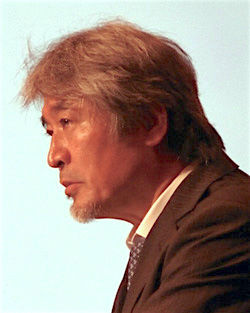
Juichi Yamagiwa
President, Kyoto University
In principle, monkeys and apes procreate in the open, while food consumption, which might trigger conflict, takes place in seclusion. Only human beings, among the around 300 species of primates, reverse these two. Investigating the cause of this puzzling inversion has shed light on how basic tenets of human society, such as conscience and ethics, have come into existence.
Sharing food is observed among some species of monkeys and apes, but this takes place between adults only in species where parents transfer food to children, suggesting that such behavior is derived from caretaking of children. Among these species, only humans bring food (a valuable commodity) to companions who are not even in their presence, demonstrating fundamental traits of compassion and empathy toward others that are considered to have driven human evolution.
Meanwhile, in the course of evolving greater fecundity, humans increasingly weaned offspring from the breast earlier than apes, resulting in the emergence of a childhood period in which soft foods must be provided for pre-adult teeth. Adding to this, an increase in brain size led somatic growth to slow down in order to provide more energy for brain growth. Completion of brain growth permits energy expenditure to shift to somatic growth, which occurs as an adolescent spurt from the age of 12 to 16 years. In order to sustain such a long and complicated period, humans have come to rely on a multi-layered organization of society: families, and communities comprised of several families. In order to maintain harmony in spite of the differing co-existence principles of these two social structures, reproductive activity was hidden from public view.
Furthermore, musical communication stemmed from collaborative rearing in human society, spread among adults. This evokes emotional identification, enhancing a capacity for empathy, which is also considered to have led to the genesis of language. Based on such human development leading to a capacity for empathy and language, ethics and conscience have been fostered in a bottom-up manner in human communities that share rules regarding food and reproduction.
Related link
- Kokoro Research Center, Kyoto University
http://kokoro.kyoto-u.ac.jp/en/index.html





